Solar panels and power stations are great for camping and home emergency use but can get pricey. AllPowers uses polycrystalline cells in their panels to keep costs down but still output 100 watts like other popular portable solar panels.
The AllPowers 100W solar panel is a nylon briefcase-style solar panel with snap-on kickstands to stand up on it’s own and a bunch of included adapters.
AllPowers also have another version built with 15 smaller panels that all fold together if you are looking for something more portable. It won’t stand on its own but it folds down smaller.
This is a review of the AllPowers 100W briefcase solar panel.
Pros
- Lightweight
- Many different connections
- Less expensive than monocrystalline cells
- IP66 water resistant
Cons
- less efficient polycrystalline cells
- not waterproof
- kickstand snaps aren’t strong
- Cord pocket doesn’t have zipper

Specs and Details
- 100 watt output
- up to 23% cell efficiency
- 18V, 5.4A
- 20×25.6×1.2 inch folded
- 48×25.6x.4 inch unfolded
- 3.6 kg (7.9 pounds)
- water resistant
- $199 CAD ($159 USD)
What’s in the box?
So what do you get in the box?
- 1 nylon foldable solar 100 watt solar panel (folds in half with 2 50 watt panels)
- 2 snap-on kickstands
- Adapters
- 5.5*2.1mm
- 5.5*2.5mm
- 3.5*1.35mm
- Anderson plug
- 8mm
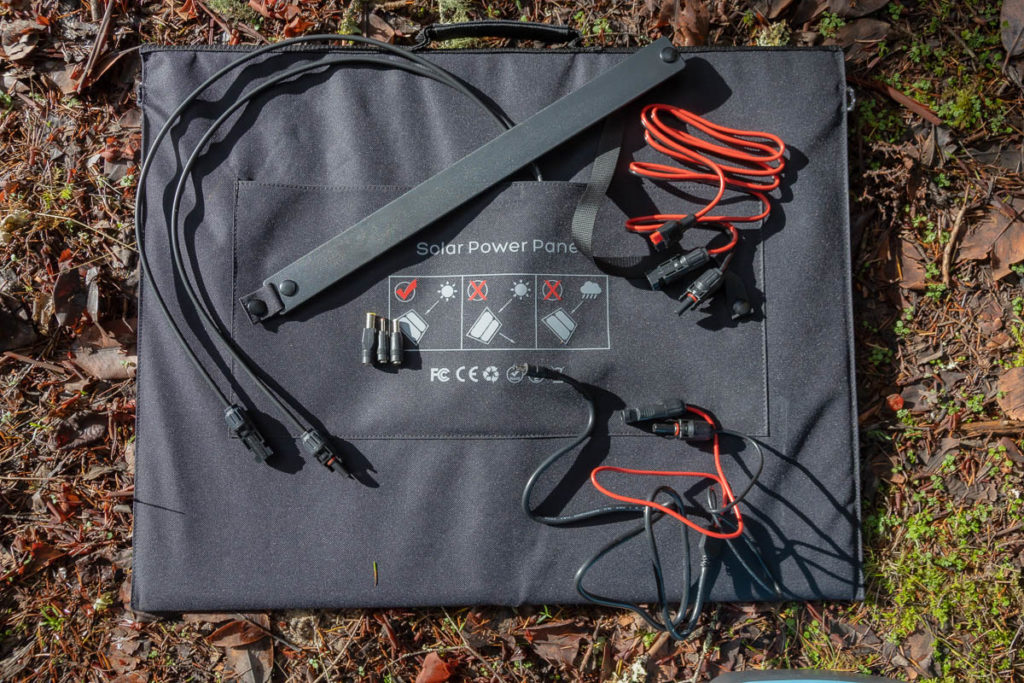
Setup
The AllPowers 100W solar panel is fairly easy to set up. Snap on the kickstands. Unfold it and direct it to the sun, pulling out the kickstands.
Two cords come out of the panels and connect both to either the included Anderson or adapter cables. It would be nice if these were attached and you didn’t have to carry them around but then you wouldn’t get the flexibility of connections.
The kickstand snaps aren’t super strong. One of mine kept popping off during set up. Once it’s set up, they stay well. There are small loops to clip on to on the sides so you could hang it but I put it on the ground with the kickstands all the time. I’d rather they stay attached so I don’t lose them.
How much does it charge?
I’ve only been able to test the AllPowers panel in the winter sun so far and sunny days have been rare the last few weeks. With indirect winter sun in the trees, the AllPowers panel easily pull 10-15 watts. This post will updated when we get more sun for testing.
A monocrystalline panel like the Jackery SolarSaga generated a slightly higher wattage at 20 watts in the same location and light. I’m assuming it’s because of the slightly more efficient monocrystalline cells.
How big and heavy is it?
The AllPowers 100 watt solar panel weighs about 8 pounds and is about 20 inches by 25 inches folded.
When unfolded, it’s 48 inches wide by 25 inches tall.
When folded it’s about 1.2 inches thick but unfolded it’s about .5 inches thick.
The size and weight makes it easy to carry around camp or into the backyard. The nylon handle is comfortable to carry. This panel is too big to carry on a backpacking trip on your backpack but it’s easy to put in the car and carry to camp.
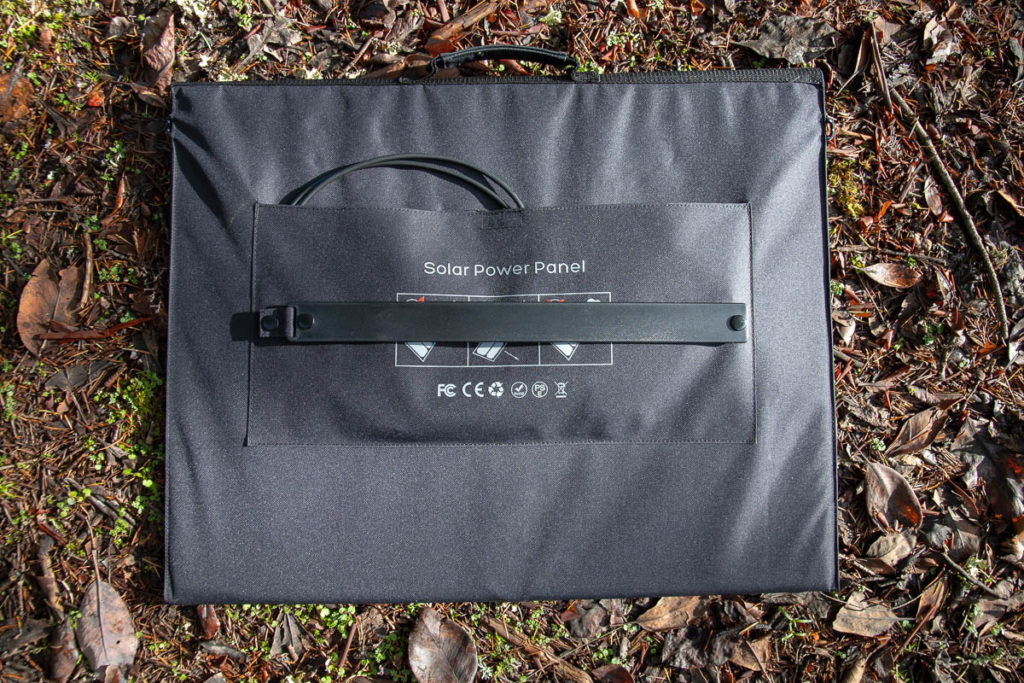
What connections does it have?
Some solar panels only come with one style of connection. There are other adapters out there but that’s another thing to buy.
The AllPowers panel has an MC4 connection with a 5 different adapters to fit as many different devices as possible.
- 5.5*2.1mm
- 5.5*2.5mm
- 3.5*1.35mm
- Anderson plug
- 8mm
The 8mm plug is useful for a lot of power stations like the Jackery Explorer 500 or the Generark HomePower One.
I was a bit confused which plugs should be used at first being unfamiliar with the MC4 connection but they only fit one way so it’s easy to figure out.
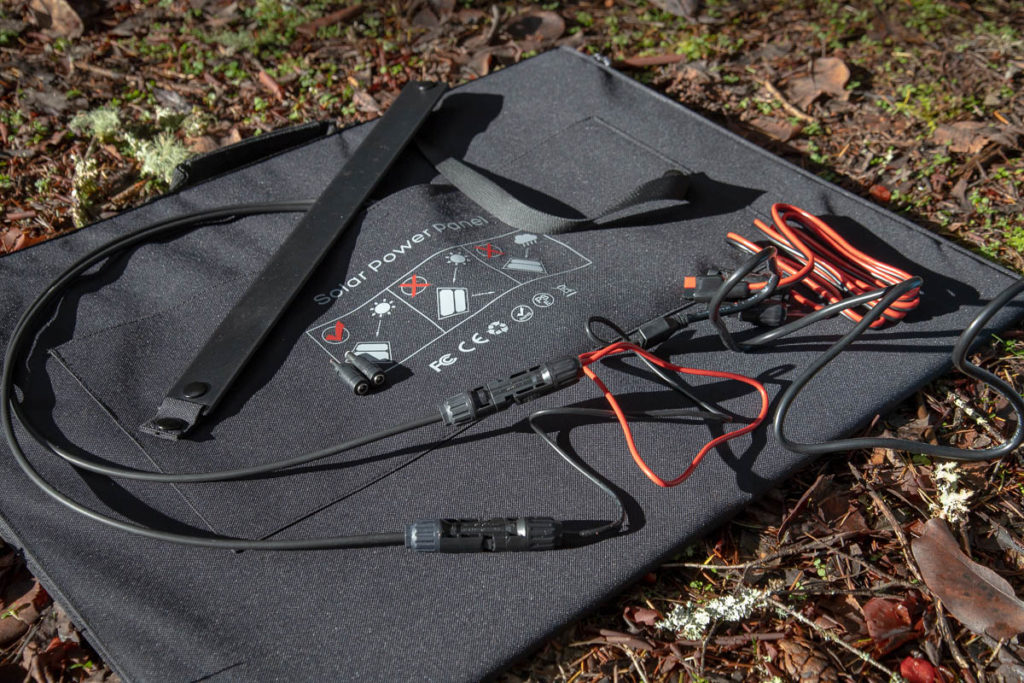

Monocrystalline vs Polycrystalline Solar Cells
Mono and polycrystalline cells are two different kinds of solar cells. Polycrystalline cells are made up of multiple silicon crystals, are less expensive but slightly less efficient.
The AllPowers panel is made with polycrystalline cells with an efficiency of about 21%. Because of the cheaper solar cells, the AllPower panel ends up being $160 USD compared to about $300 for a monocrystalline panel like the Jackery SolarSaga or Generark SolarPower One. The value you get out of the polycrystalline cells is great since they are very close to the efficiency of monocrystalline cells.
The polycrystalline cells are blue while the monocrystalline cells are black. The colour of the panels didn’t really matter to me. If it was a large array being mounted on your house, colour might matter a bit more.
At the end of the day, the panel still outputs up to 100 watts. It just takes more polycrystalline cells in the panel to do it.
Verdict: AllPowers 100W Briefcase Solar Panel
Rating: 7.5/10
Verdict: Recommended.
The AllPowers 100W solar panel is quite a bit less expensive because of the polycrystalline cells. The nylon case makes it tough but easy to carry around. It’s easy to plug it into your devices to charge with all the included adapters. It would be nice to have permanently attached kickstands with better snaps but with the price being nearly half of other monocrystalline panels, the AllPowers is a good deal.
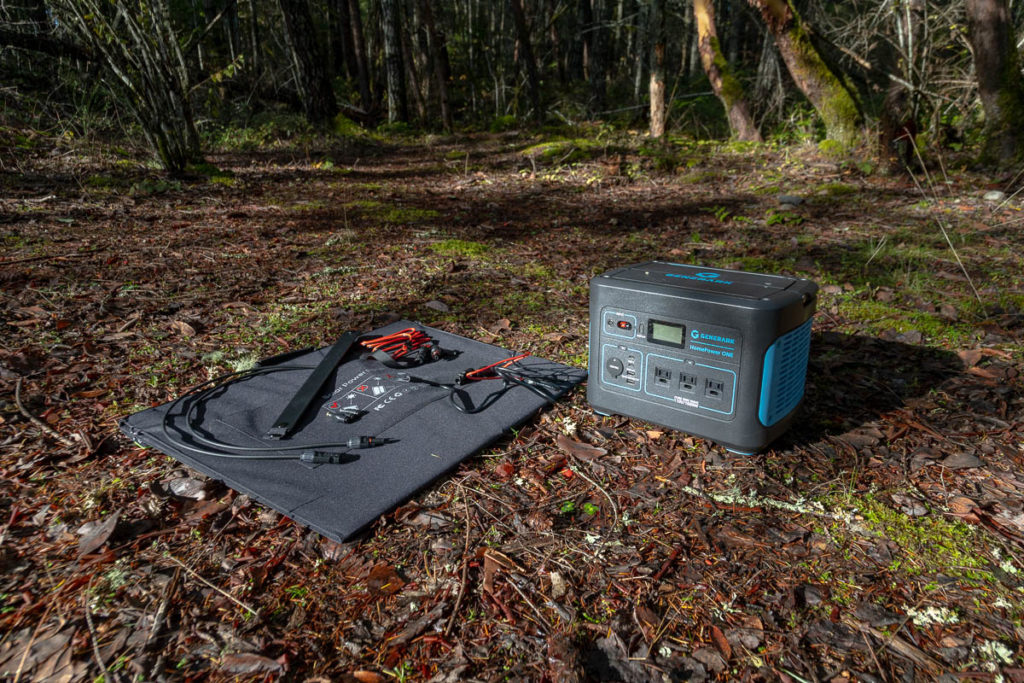
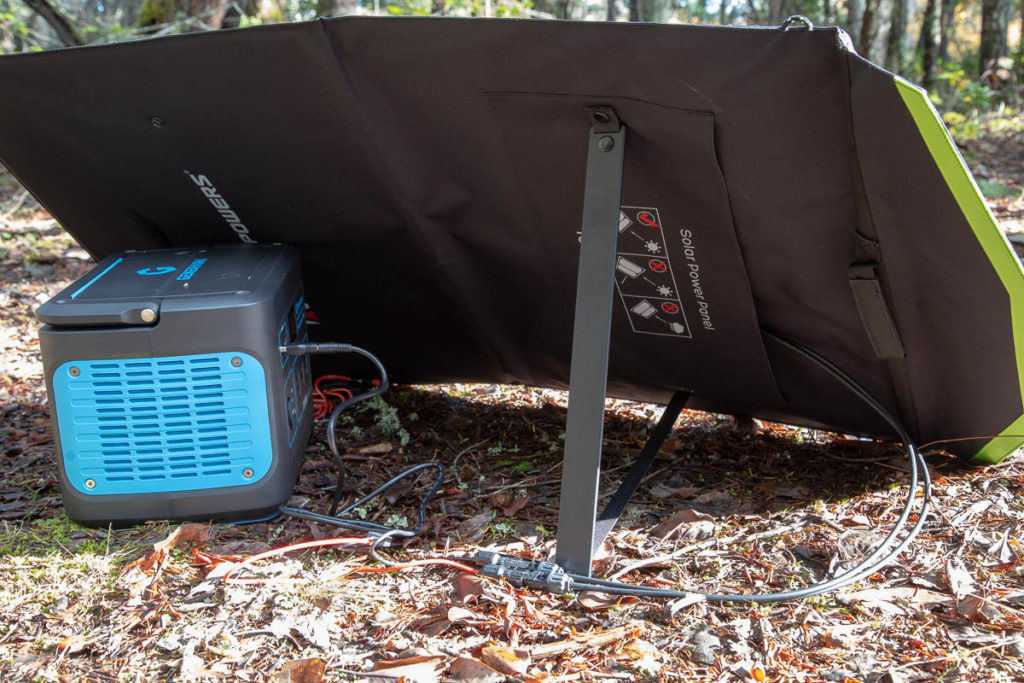
This is a really helpful and thorough review! I’ve been looking at portable solar panels for camping, and the Allpowers 100W seems like a solid option. Your points about the weight and the included accessories are especially useful. Thanks for the detailed breakdown!